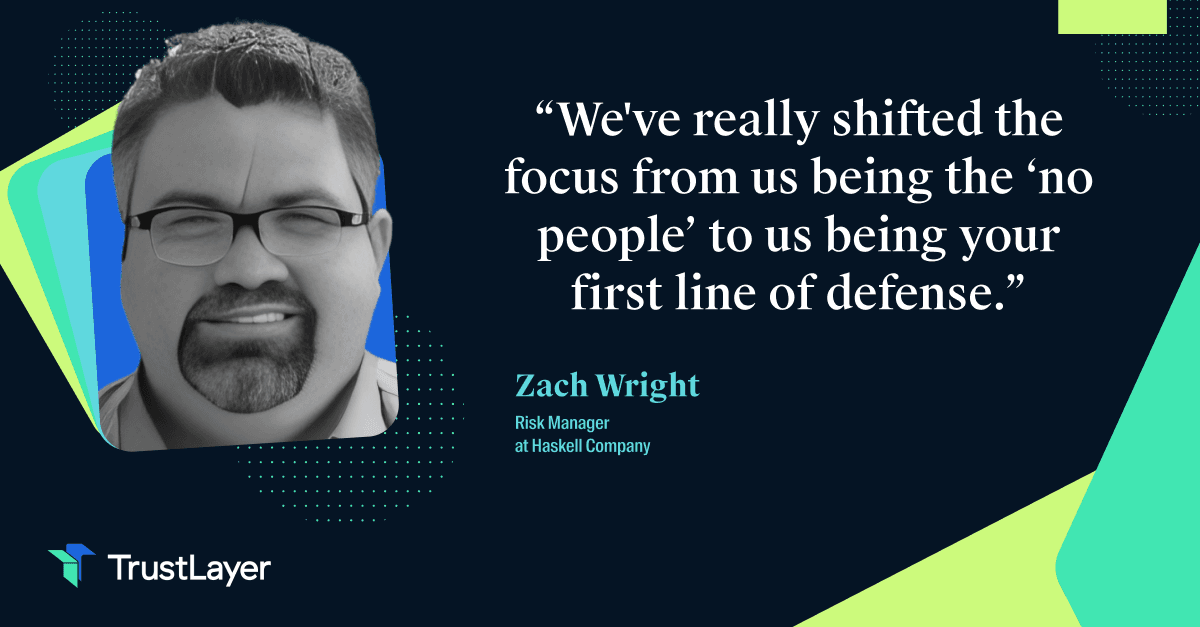How Empowering Your Risk Manager Can Strengthen Your Organization's Resilience and Success
In today’s rapidly changing business landscape, risk management has never been more vital. C-suite executives increasingly recognize that their risk managers are pivotal to the company's longevity and success. This article explores the essential roles, responsibilities, and insights into risk management within a corporate setting, emphasizing the importance of supporting these professionals.
Understanding the Role of a Risk Manager
Risk managers are crucial in predicting, identifying, and mitigating potential risks affecting a company's performance. Their work goes beyond mere compliance; it involves strategy and leadership. Understanding their responsibilities can illuminate their value in the C-suite.
The Core Responsibilities of a Risk Manager
Risk managers are responsible for a plethora of tasks. They assess operational risks that vary by industry, geographic location, and specific business activities. Key responsibilities include:
- Conducting risk assessments to identify vulnerabilities.
- Developing and implementing risk management policies.
- Monitoring compliance with laws and regulations.
- Creating risk mitigation strategies to minimize adverse effects.
These core responsibilities enable organizations to navigate threats efficiently, safeguard their assets, and ensure smooth operations. According to statistics, companies with a dedicated risk management function see a 30% reduction in overall operational risks.
In addition to these tasks, risk managers often engage in scenario analysis and stress testing to evaluate how different situations could impact the organization. This proactive approach prepares them for potential crises, ensuring the company can respond swiftly and effectively. Furthermore, they frequently collaborate with external stakeholders, including insurers and regulatory bodies, to stay informed about emerging risks and best practices in risk management.
The Unique Skillset of a Risk Manager
Risk managers require unique skills to thrive in their complex roles. These include analytical thinking, proficiency in data management, and strong communication abilities. Many professionals in this field hold specialized certifications, such as the Certified Risk Manager (CRM) designation, which enhances their expertise and credibility.
Moreover, risk managers often serve as the bridge between departments, facilitating discussions on risk factors and promoting a unified approach to risk management across the organization. Their ability to translate complex risk data into actionable insights is vital for fostering a risk-aware culture within the company. This culture encourages employees to recognize and report potential risks, enhancing the organization's resilience against unforeseen challenges.
Additionally, risk managers must stay abreast of global trends and technological advancements that could influence risk landscapes. For example, the rise of cyber threats necessitates a deeper understanding of information security, while shifts in regulatory frameworks require ongoing education and adaptability. By continuously honing their skills and knowledge, risk managers safeguard their organizations and position themselves as invaluable strategic partners in driving business growth.
The Importance of Risk Management in Business
In an environment fraught with uncertainties, effective risk management is more than just a safety net; it’s a strategic asset. By preemptively addressing risks, companies protect their assets and position themselves favorably in the marketplace.
Identifying and Assessing Potential Risks
Risk identification is a crucial first step in risk management. Companies must be vigilant in evaluating internal and external risks that could impact their operations. Natural disasters, cybersecurity breaches, regulatory changes, and economic downturns represent significant challenges.
Research shows that organizations with formal risk assessment practices are 50% more likely to achieve their operational goals. This underscores the importance of integrating risk management into the business strategy. Additionally, the rise of global interconnectedness means that risks can often originate from unexpected sources, such as geopolitical tensions or shifts in consumer behavior. Therefore, businesses must adopt a proactive approach to continuously monitor the risk landscape, employing tools like risk matrices and scenario analysis to anticipate potential threats.
Implementing Risk Mitigation Strategies
Once risks have been identified, developing mitigation strategies becomes the priority. Risk managers are critical in crafting plans that may involve everything from diversifying supply chains to investing in technology to reduce operational risks.
Furthermore, by managing certificates of insurance (COIs) effectively, risk managers ensure that the company is adequately protected against potential liabilities. Judicial courts increasingly scrutinize the adequacy of such coverage, so having these documents meticulously managed can be a game changer in disputes. Beyond insurance, companies are also exploring innovative risk transfer mechanisms, such as captive insurance and risk pooling, which can provide tailored solutions to unique risks. Moreover, fostering a risk-aware culture within the organization encourages employees to identify and report potential risks, creating a more resilient business environment.
The C-suite's Role in Empowering Risk Management
The support of the C-suite is paramount in fortifying an organization's risk management framework. When executives recognize and empower their risk managers, they foster an environment where risk is handled proactively rather than reactively.
Fostering a Culture of Risk Awareness
Establishing a culture of risk awareness within the organization is integral to risk management. This culture encourages employees at all levels to identify, report, and address risks. A company can cultivate an environment of informed decision-making by promoting open conversations about risk.
Everyone in the organization, not just the risk team, should feel responsible for risk management. To foster this culture, leadership must model risk-aware behavior and ensure risk management is part of the strategic conversation. This can be achieved through regular training sessions, workshops, and internal communications highlighting the importance of risk management. Furthermore, recognizing and rewarding employees who actively engage in risk identification and mitigation can reinforce this culture, making it a core value of the organization.
Providing Necessary Resources and Support
Empowering risk managers with the resources they need is non-negotiable. This includes access to the latest technologies, data analytics tools, and training opportunities. It also involves establishing clear lines of communication between the risk management team and the executive team, ensuring that the risk perspective is included in key business decisions.
Organizations like TrustLayer exemplify how strategic partnerships can enhance risk management efforts. This collaboration creates pathways for enhanced oversight and better data management practices, ultimately improving risk outcomes. Additionally, investing in advanced risk assessment software can streamline the process of identifying potential vulnerabilities, allowing risk managers to focus on strategic planning rather than merely reactive measures. By integrating risk management into the overall business strategy, organizations can safeguard their assets and position themselves to seize opportunities that arise from calculated risk-taking.
The Impact of Effective Risk Management on Company Success
The right risk management strategies protect a company's assets and significantly contribute to its overall success. Companies prioritizing risk management are better positioned to adapt in times of crisis.
Enhancing Decision-Making Processes
Effective risk management directly influences decision-making processes across the organization. By providing accurate risk assessments, risk managers empower the C-suite to make informed decisions that align with the company's long-term goals.
A study by McKinsey & Company found that organizations with strong risk management practices experienced 25% higher growth rates than their industry peers. This data exemplifies the link between effective risk management and robust organizational performance. Additionally, when companies incorporate risk management into their strategic planning, they identify potential pitfalls and uncover new opportunities for growth. This proactive approach fosters an environment where innovation can thrive, as teams feel more secure in experimenting with new ideas, knowing that risks are being effectively monitored and managed.
Safeguarding the Company's Reputation and Assets
Furthermore, prudent risk management helps to protect a company's reputation in the market. Negative pubAdverseesulting from operational failures can have long-lasting impacts, often taking years to recover. By implementing strategic risk management practices, companies can mitigate crises before they escalate into public relations disasters.
For instance, businesses that engage in financial mismanagement or lack proper insurance coverage can face lawsuits and reputational damage. Effective risk monitoring protects the company's image and, subsequently, its market positioning. Moreover, companies that actively communicate risk management strategies to stakeholders can enhance trust and confidence among investors, customers, and employees. Transparency in risk management not only reassures stakeholders but also positions the company as a responsible and reliable entity in the eyes of the public, further solidifying its market presence and competitive edge.
Future Trends in Risk Management
The landscape of risk management is continuously evolving. Integrating new technologies and increasing regulatory pressures are shaping how organizations approach risk. Risk managers and C-suite executives must stay on trend to safeguard their organizations effectively.
The Growing Importance of Cybersecurity
As businesses become increasingly digital, cybersecurity's significance cannot be overstated. Cyber threats pose organizations with unprepared losses of millions of dollars annually. According to Cybersecurity Ventures, global cybercrime damages are expected to reach $10.5 trillion annually by 2025.
Businesses need to invest in robust cybersecurity frameworks and continuously train their employees. Risk managers are pivotal in driving these initiatives, ensuring organizations are resilient against the latest cyber threats. Moreover, the rise of remote work has further complicated cybersecurity as employees access company networks from various locations and devices. This shift necessitates a more comprehensive approach to security, including implementing multi-factor authentication, regular security audits, and a zero-trust architecture that assumes no user or device is inherently trustworthy.
The Role of AI and Big Data in Risk Management
Artificial Intelligence (AI) and Big Data are transforming the risk management landscape. These technologies enable risk managers to analyze vast datasets in real time, thereby identifying patterns and predicting potential risks before they materialize.
Forward-thinking organizations already leverage AI for risk assessments, fraud detection, and compliance monitoring. Risk managers must adapt to new tools and methodologies as these technologies advance to remain effective. Additionally, the integration of machine learning algorithms can enhance predictive analytics, allowing companies to react to risks and proactively mitigate them. Harnessing data from various sources, including social media and IoT devices, provides a more holistic view of potential threats, enabling organizations to make informed decisions swiftly.
Furthermore, the ethical implications of AI in risk management cannot be overlooked. As organizations increasingly rely on automated systems for decision-making, ensuring that these systems are transparent and free from bias is essential. Risk managers must advocate for ethical AI practices, balancing innovation with responsibility. By doing so, they can help build trust among stakeholders and ensure that risk management processes align with broader organizational values.
As we've explored the critical role of risk managers and the evolving landscape of risk management, it's clear that the right tools are essential for success. TrustLayer is at the forefront of this transformation, offering the best-in-class certificate of insurance (COI) tracker explicitly designed for the modern risk manager. With TrustLayer, you can automate the tedious process of verifying compliance documents, freeing up valuable time and resources. Embrace the future of risk management and join the hundreds of thousands of companies that have streamlined vendor document management with TrustLayer. Don't let manual processes hold you back. Set a time to talk with our team and discover how TrustLayer can empower your risk management strategy.








